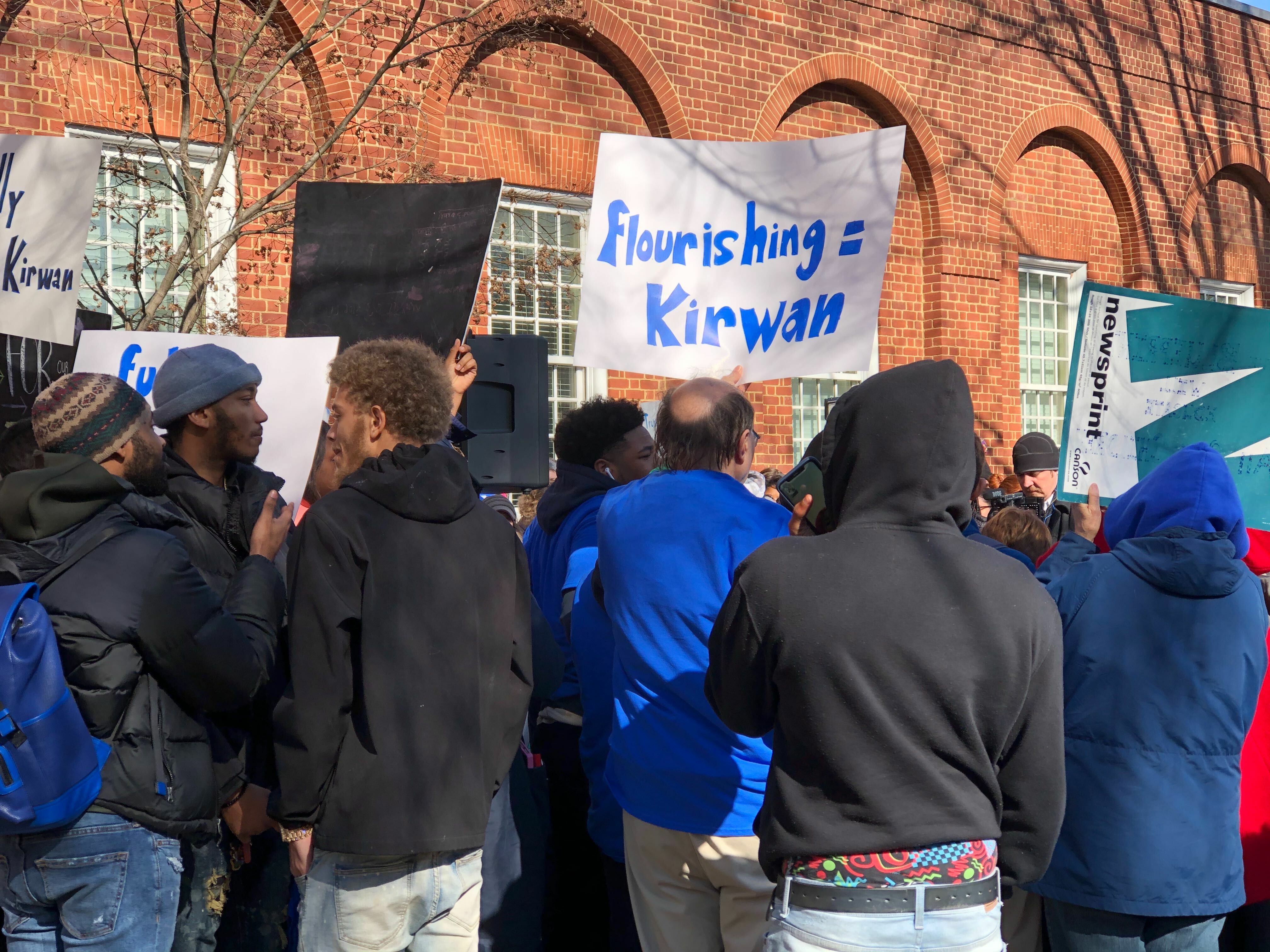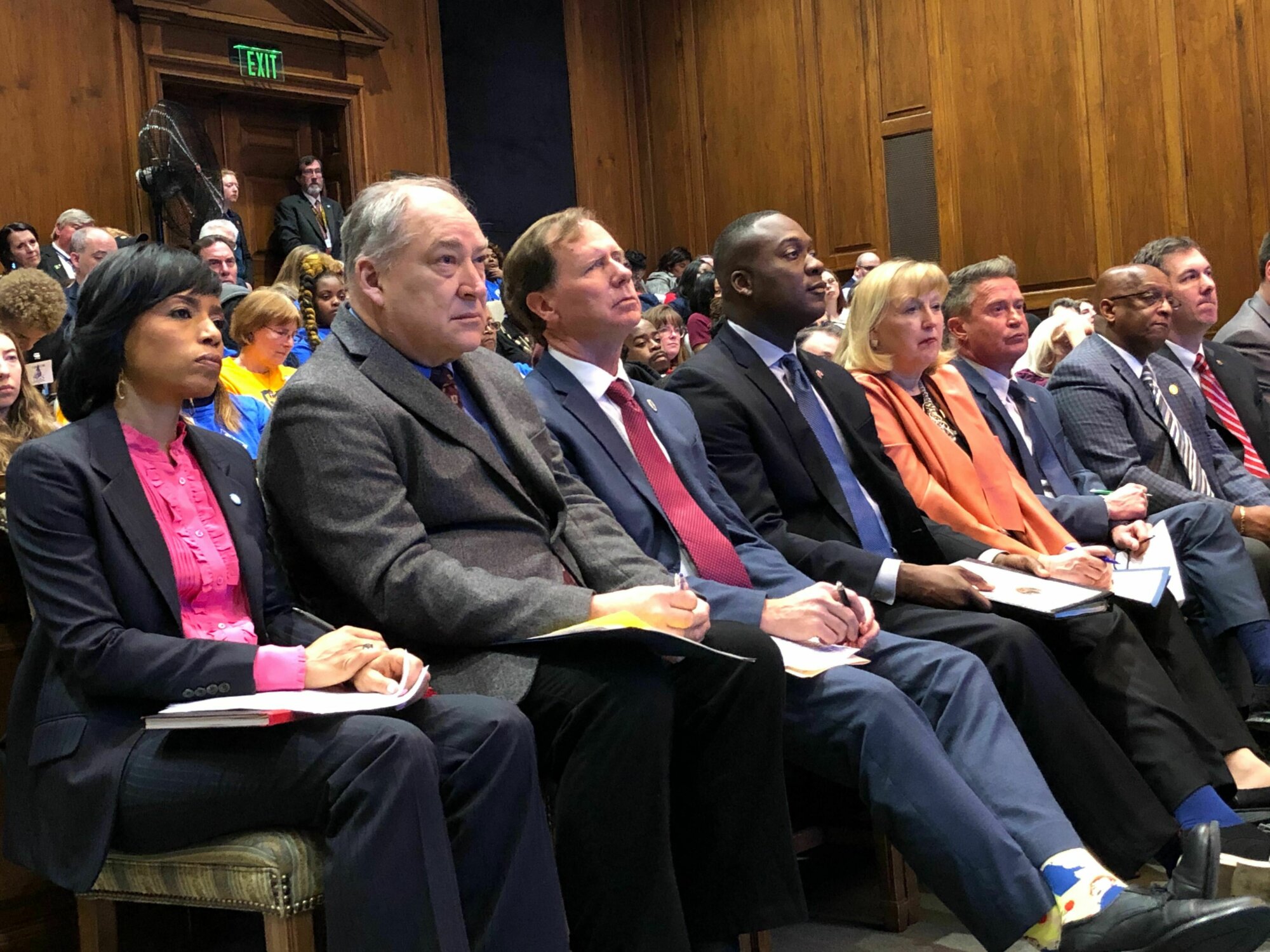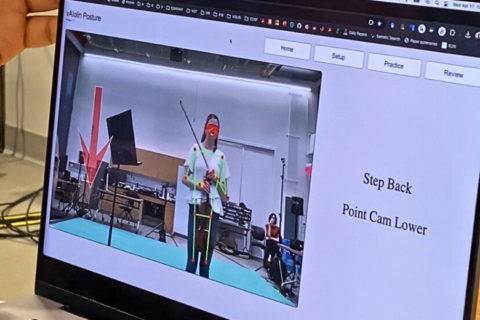Crowds chanting “Our kids can’t wait!” jammed into a designated area for rallies not far from the Maryland State House in Annapolis.
It was part of a “pep rally” on Monday for the $4 billion plan designed to reform education in the state. Hundreds of teachers, students and education advocates attended the events on Presidents Day.
The “Blueprint for Maryland’s Future” — the focus of the joint committee hearing — would add teachers, boost their pay with a proposed $60,000 starting salary, and expand pre-K programming.
And that’s just for starters.

After the rally, lawmakers settled in for a joint committee hearing that would last for hours. Some 130 witnesses had signed up to testify. There were so many people attending the hearing that an overflow room was provided in another state office building nearby.
Among the supporters was William “Brit” Kirwan, chancellor emeritus of the University System of Maryland. The Kirwan Commission, which came up with the recommendations in the reform package, is named after him.
While he was questioned about the cost implementing the recommendations, Kirwan told lawmakers the plan is badly needed to restore Maryland to its position as one of the nation’s top public school systems.
Kirwan told lawmakers the plans to boost teacher pay and restore prestige to the field would attract highly qualified teaching candidates. The plan also includes efforts to address the many issues students deal with — from poverty to mental health.
Kirwan told lawmakers if the plan is implemented, there’ll be a better student-teacher ratio — so that there will be more and better trained teachers in the building. He also said it would create a future teacher pipeline.
Under his vision, Maryland would “reach down into schools around the state to encourage more young people to consider teaching as a career.”
At different points in the hearing, which included panels made up of four committees, lawmakers asked how the programs would be paid for.
At one point, Sen. Paul Pinsky, who heads the Senate Education, Health and Environmental Affairs Committee, cut off the questions.
“We’re going to hold the funding issue to when the Appropriations and Budget and Tax and other committees address that issue.”
While witnesses continued to file in to the packed joint hearing room, Maryland Gov. Larry Hogan posted his concerns on his Facebook page, calling the plan “reckless and irresponsible.” He noted that there are, so far, no detailed plans on exactly how the state and counties would fund the reform plan.
A number of possible funding resources have been brought up by lawmakers, including proposals to change the state’s tax structure, allowing sports betting, and taxing some internet transactions.
While there were repeated attempts by some lawmakers to get more concrete information on what obligations their counties would have toward funding the plan, several county executives took on the questions by addressing the plan as an investment.

Inside the hearing room, Montgomery County Executive Marc Elrich told lawmakers, “You can’t afford not to fund this.”
As a former classroom teacher, Elrich said he could see how the plan laid the groundwork for a better prepared workforce of the future.
“Today, the biggest thing people look for is human capital. And if we do not have the human capital ready for the jobs that are out there,” those jobs will go someplace else, Elrich said.
According to state analysis provided by the Department of Legislative Services, counties would have to contribute more to education.
Under the plan, Prince George’s County would have to come up with an additional $386 million annually.
Prince George’s County Executive Angela Alsobrooks was unfazed by the figures, saying the county is already putting more money toward education.
“Sixty-two percent of our budget goes back to education,” she told lawmakers. “We’ve increased education funding by $177 million,” and the county had funded education at a level above a state-mandated funding formula, Alsobrooks said.
Among those listening to the back-and-forth as lawmakers got a chance to ask questions about the plan, was Dr. Monica Goldson, the CEO of the Prince George’s County School system.
Goldson said she was extremely optimistic about the chances of getting the reform package passed. She said the county serves 136,000 students with dreams of a bright future, “And this is one of those ways to help make that happen.”
WTOP’s Kate Ryan reported from Annapolis, Maryland.








